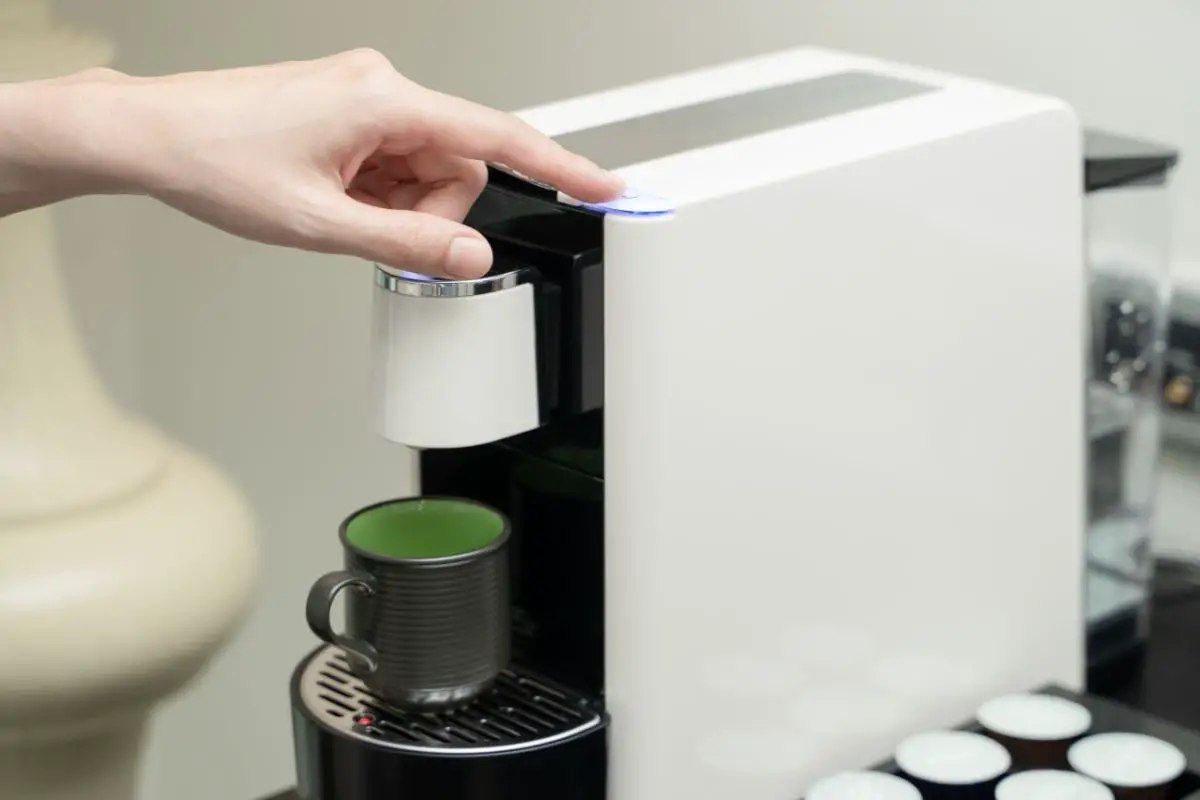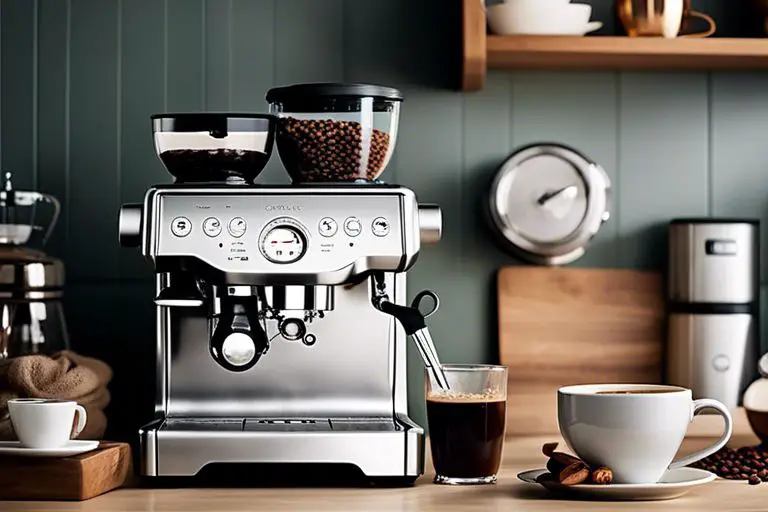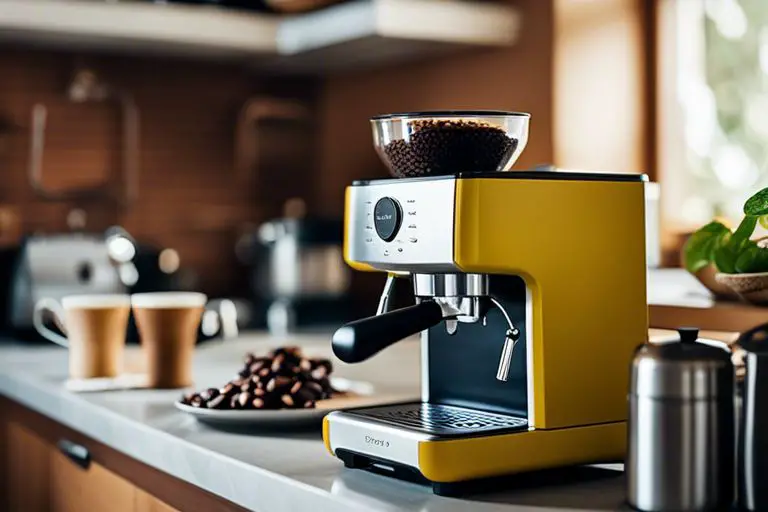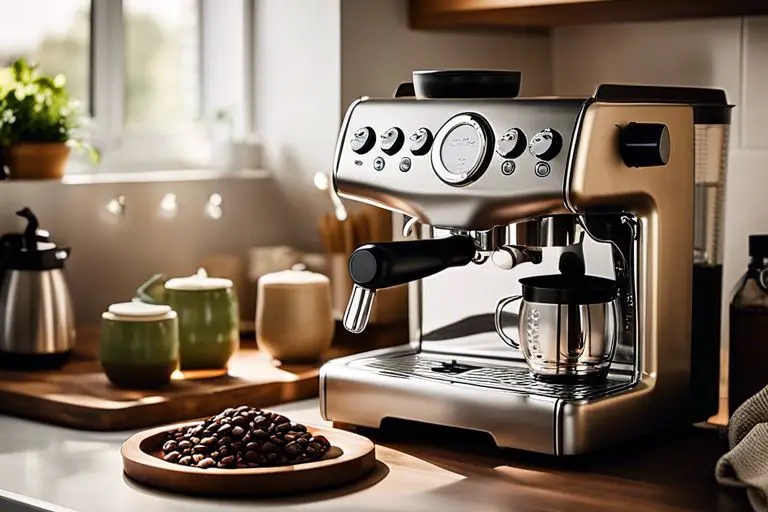DeLonghi is an Italian company that used to make radiators until they became known worldwide for their excellent coffee machines. They sell a large range of machines, including those that use freshly ground coffee beans or Nespresso coffee pods.
With a DeLonghi machine, you can make your coffee however you like it best. Their machines are popular with homeowners across the United States thanks to their high quality components and intuitive design.
It isn’t hard to make a good cup of coffee on a DeLonghi espresso maker, however, getting the perfect cup is a little bit more tricky. Depending on the model you own, there are several tips and tricks that you can use to improve the quality of your brew even further.
This guide is here to tell you how to use your DeLonghi espresso machine for making all of your favorite drinks. We will also cover how to clean and maintain your machine to ensure it lasts for a long time.
Safety First
There aren’t a lot of things that can go wrong while using an espresso machine. That said, there are a few safety precautions worth following to avoid breaking your machine or giving yourself a nasty burn.
You should always make sure that your machine is placed on a flat, dry section of countertop. It isn’t advised to leave your espresso maker sitting in a pool of water, as this may lead to electrical malfunctions.
Similarly, you shouldn’t operate your machine with wet hands, as moisture may seep into the gaps around the buttons. It is also a good idea to only touch the control knob and buttons to avoid putting your hands on any hot components.
Generally, you shouldn’t let children handle your coffee machine since water may come out the brew head quite explosively. As such, it is a good idea to keep your hands back while the coffee is brewing to avoid being splashed with hot water.
Making An Espresso On A DeLonghi Machine
In this section, we will highlight some simple steps for making an espresso on a DeLonghi coffee maker. Some machines may require fewer steps, such as those that use coffee pods, but for most machines you will need to do all of them to get the best brew.
For the purpose of this guide, we will assume you are using your own coffee beans rather than Nespresso capsules.
Fill Up The Water Reservoir
Water is one of the most crucial ingredients for a cup of coffee, so the first thing you will need to do is fill the reservoir on your machine with water. Many DeLonghi units come with removable reservoirs that you can detach from the machine to carry over to the sink.
If your machine doesn’t have this feature, then you will need to use a jug to carry water over to your device. Make sure to only fill your reservoir up to the level indicated on the reservoir. Overfilling your machine could lead to all sorts of issues, so it is better to stick to the specified limit.
You should also wipe down your reservoir after you have filled it to remove droplets of water on the outside.
Preheat Your Espresso Maker And Grind Your Beans
The ideal temperature for brewing coffee is between 195 and 205 °F so to reach this temperature you need to let your machine preheat the boiler. Some DeLonghi units will have a cup warming plate at the top of the machine, so you can warm up an espresso cup at the same time.
While you are waiting for the boiler to preheat, you should grind your beans. DeLonghi machines can accept any kind of beans, including those that are superfine as well as those that are a bit rougher. Generally, for an espresso, your ground beans should have the consistency of sugar.
Normally, you will need to wait for the green light to flick on, indicating that the water in your boiler is ready for extraction. However, if you want to get really technical about your coffee, you can attempt to temperature surf your machine to get the water just right.
Temperature Surfing
Temperature surfing is the process of altering the temperature of the water in the boiler to get it exactly between 195 and 205°F. Most coffee makers will use internal thermostats to determine when to draw a shot of coffee.
Normally the temperature that these units are set at is within the above range, but it may be a little on the low side. With temperature surfing, you can trick your machine into going above its set brew temperature.
This works best with machines that use a single boiler to feed both the brew head and the steam wand. On these devices, it is possible to turn on the steam function just before the green light turns on to indicate your shot is ready.
To get the timing right, you will need to know roughly how long your machine takes to warm up.
Turning on the steam function will reactivate the boiler and further raise your water temperature. You only want to do this for a few seconds, as otherwise your water will be too hot and may burn your coffee.
If you need to cool down the water in the boiler, then run the brew head without a portafilter attached to make the boiler draw in more cold water from the reservoir.
Temperature surfing takes a bit of practice, and will require some trial and error before you get the hang of it. However, it is a very useful trick to know about if you want to craft the perfect shot of espresso.
Add Coffee Grounds To The Portafilter
Remove your portafilter from the brew head and insert the correct size of cup into the end. Now you can pour your coffee grounds into the filter until it is filled to the brim. Make sure to brush any loose grounds off the edge of the portafilter before reattaching it to the machine.
The automatic tamper should press your beans into the cup for you so that all you need to do is secure the portafilter and pull your shot. Alternatively, you can tamper your beans using a handheld tamper instead.
Some machines that use coffee pods will have a reusable pod instead of a portafilter. You can fill these with your own coffee grounds to brew different blends of beans without relying on store-bought pods.
Once you have done this, you are ready to place a cup under the brew head and pull your delicious shot of espresso.
Making A Cappuccino On A DeLonghi Machine
If you prefer to have milk in your coffee, then you can use the steam wand on your DeLonghi machine. For this, you can follow the same steps listed above for brewing your coffee and prepare your milk in a separate jug to add after you have pulled your shot.
A cappuccino is characterized by a rich creamy texture and in order to achieve this consistency you will need to use your steam wand correctly. This process isn’t difficult and by following the steps below you can create your very own delicious microfoam.
How To Use A Steam Wand
Most DeLonghi models will come with a steam wand for frothing milk. Milk that has been frothed to a microfoam won’t curdle when you add it to coffee and creates a delicious creamy texture that is essential for a cappuccino.
First, measure out the amount of milk you need into a metal jug, making sure there is enough room in the jug for the milk to move around without spilling. You should always purge your wand before inserting it into your milk.
To do this, simply open the main valve and let a little steam out. This will remove any residual water or milk left in the tip of your wand so it can’t contaminate your milk.
Place the tip of your wand, so it is partially inserted into the milk, but not fully. Tilt your jug slightly so that the milk is at an angle before opening the valve to let the steam in.
When you first open the valve to let the air into the milk, do so for just a few seconds before fully submerging the tip to create a whirlpool. If you don’t let the air in first, then you may scorch your milk, however you don’t want to put too much air in.
Hold the tip of the steam wand beneath the surface of the milk until it is between 135 and 150 °F. Going above this limit will make your foam too heavy and give it the wrong consistency.
Provided you stick within this temperature limit, all the fats in your milk will be dissolved for the perfect creamy texture.
Keep one hand on the outside of the jug to keep track of the temperature of your milk. When your hand starts to feel hot, countdown 3 seconds and close the steam valve. Remove the tip of the wand from your milk and lightly knock your jug on the table to remove any large bubbles.
Lightly swirl your jug to mix the foam into the milk below, and purge your wand one more time to remove any milk that may have been sucked up the nozzle.
Always wipe your steam wand with a cloth after purging it. You can now pour your milk into your freshly brewed coffee for a delicious cappuccino.
Cleaning Your DeLonghi Machine
Just like any piece of kitchen equipment, you should regularly clean your DeLonghi machine to keep it functioning properly. Cleaning your machine doesn’t take long, and doing it on a regular basis will capture the pure flavor from your coffee grounds.
Make sure to knock out your portafilter and clean out any residue with warm water before you fill it with fresh grounds. You should also remove the drip tray and pour out any spillages before wiping the tray down with a wet cloth.
As we said above, you should regularly purge and wipe down your steam wand before and after using it. This is to remove any milk that may have been sucked up the wand and which may spoil the flavor or your drink.
Descaling Your DeLonghi Machine
As well as cleaning your espresso maker, you also need to occasionally descale it. Over time, calcium deposits may start accumulating in the internal components of your machine. This is a much bigger problem if the water where you live is particularly hard.
To remove these deposits and descale the machine, you need to buy a descaling solution. This is a special substance that you can add to the water in your reservoir.
Running the machine without coffee in the portafilter will carry this solution through your machine, so it can dissolve build ups of calcium.
If you want a homemade descaling solution, then you can fill your reservoir with a 50/50 mixture of water and white vinegar.
Conclusion
Following the above guide, you will be able to create incredible espressos and other types of coffee using your DeLonghi machine.
After you have prepared your beverage, it is a good idea to quickly clean down your machine, as it will be easier to clean while it is still hot.
Provided you use it properly and regularly maintain it, your DeLonghi coffee maker will be preparing delicious espressos, americanos and cappuccinos for many years to come.






